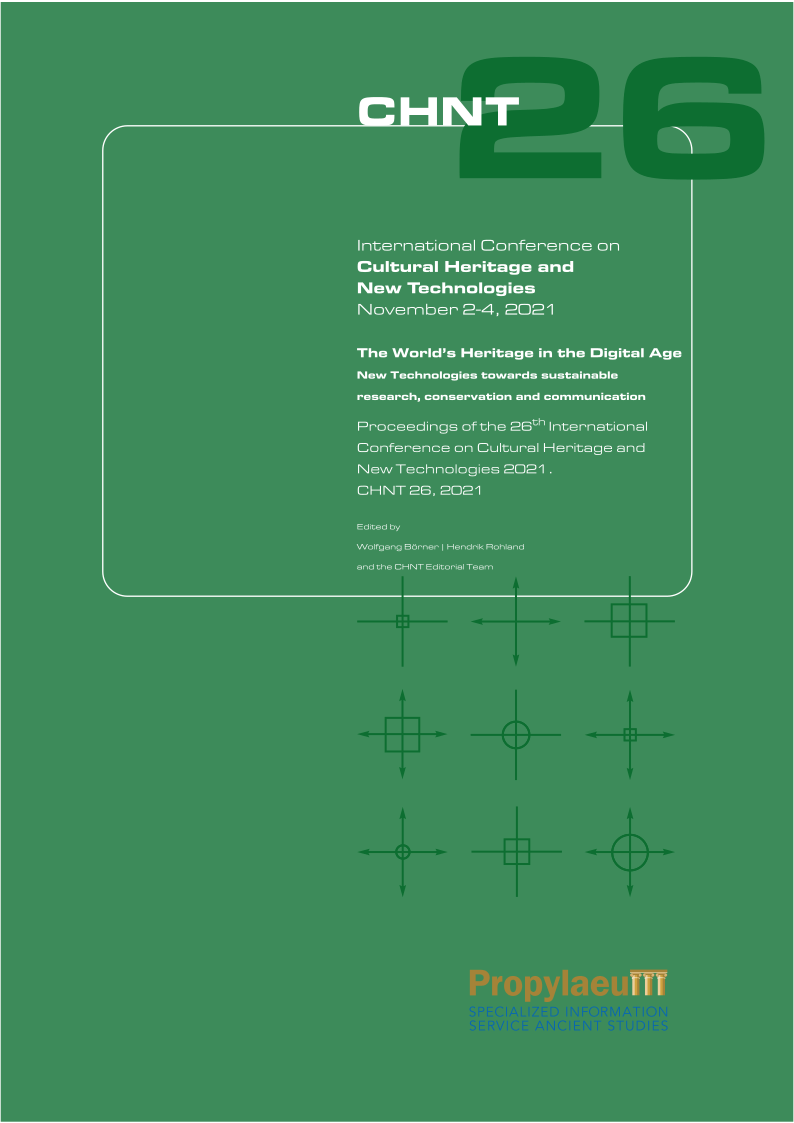Archaeological documentation during a securing and restoration pro-ject: an example of successful approach.
The case of the castle of Larciano (Pistoia – Italy)
Keywords:
building archaeology, photogrammetry, restoration, castle wallsAbstract
This paper presents the photogrammetric survey of a medieval castle and the challenges we faced in obtaining a complete and accurate documentation. It focuses on the specific workflows that the different documented structures required. The objectives of the archaeological survey were to document the buildings before restoration work and to give the 3D models to the project designers for the calibration of safety work. The case study is the castle of Larciano, that was in the last years object of securing and restoration interventions. More specifically, the works involved the castle walls and its fortified gates. Public institutions, architects, engineers, and archaeologists were involved in the project. A first phase of the restoration project, in 2019, focused on the three fortified gates to the castle. In 2020 the project moved to the eastern section of the walls, which was threatened by a real risk of collapse. On both occasions, archaeological surveys and analyses had to be matched with the need for restoration. During the two phases of intervention, two different workflows were defined, due to the peculiarities of the structures: this confirms that survey of architectural heritage has specific characteristics that challenge the adaptation of archaeologists. For the three gates, 3D models were realized with a photographic campaign after the removal of vegetation from the buildings and before the scaffolding construction. At the eastern walls, the photogrammetric archaeological survey represented a challenge for the types of construction and the environmental challenges. A preliminary photographic campaign, with vegetation, had to be mixed with a second one without it but with the scaffolding. This meant a collection of more than 2000 photos, taken from less than a metre away. The processing phase was hard but successful, and with few adjustments a complete 3D model of this structure was realized, eliminating the scaffolding.
References
Drap et alii (2012). Drap, P., Merad, D., Boi, J.-M., Seinturier, J., Peloso, D., Reidinger, C., Vannini, G., Nucciotti, M., Pruno, E., ‘Photogrammetry for Medieval Archaeology. A way to represent and analyse stratigraphy’, in 18th Inter-national Conference on Virtual Systems and Multimedia, pp. 157–64. Milan, Italy: IEEE, https://doi.org/10.1109/VSMM.2012.6365920.
Genin, S. M. (2019). Photogrammetry: methods of survey and applications on restoration works, Int. Arch. Photo-gramm. Remote Sens. Spatial Inf. Sci., XLII-2/W11, pp. 557–564, https://doi.org/10.5194/isprs-archives-XLII-2-W11-557-2019.
Milanese, M., Patera, A. and Pieri, E. (1997). ‘Larciano. Museo e territorio’. Rome, L'Erma di Bretschneider.
Quirós Castillo, J. A. (1999). ‘La Valdinievole nel Medioevo. “Incastellamento” e archeologica del potere nei secoli X-XII’. Pisa, ETS.
Remondino F., Campana S. (2014). ‘3D Surveying and Modelling in Archaeology and Cultural Heritage. Theory and Best Practices’, BAR International Series 2598, Oxford, Archaeopress.
Valacchi, E., Leonini, V., Cheli, F., Somigli, L. and Martini, S. (2020). Le mura di Larciano Castello. Studi e risultati di un restauro, in Tutela & Restauro 2016.2019, Notiziario della Soprintendenza Archeologia Belle Arti e Paesaggio per la città metropolitana di Firenze e le province di Pistoia e Prato, pp. 171–178.
Downloads
Published
Conference Proceedings Volume
Section
License
Copyright (c) 2025 Lapo Somigli, Chiara Marcotulli, Francesca Cheli

This work is licensed under a Creative Commons Attribution-ShareAlike 4.0 International License.
The CHNT older Proceedings are licensed under the creative commons license CC BY-NC-ND 3.0.
From the issue 26 on, they will be licensed under the creative commons license CC-BY-SA 4.0


